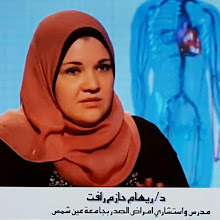-Patho-physiology:
Capillary Leak/ Exaudate stage | Bacterial Invasion/ Fibrinolytic stage | Organization/ Empyema stage |
Mechanism: Micro-organisms à PMNs à O2 free radicals + products à endothelial injury à ñ capillary permeability à ñ interstitial/pleural pressure gradient (subpleural) à effusion | Mechanism: ññ endothelial injury with bacterial multiplication over whelming lymphatics, MQ, neutrophils | Mechanism: Continuous fibroblastic migration from visceral, parietal pl. à coagulable pleural matrix (inelastic membrane or pleural peel) à thick cavity 'e thick yellowish white opaque viscous pus |
Fluid ccc: · Ipsilateral,Small, Free · Sterile (-ve gram and culture) · Predominant PNLs · PH > 7.2, exaudate · Glucose > 60 mg · LDH > 500 IU/L · Appears in 2-5 ds of pneumonia onset | Fluid ccc: · Cloudy fluid · +ve gram and culture for bacteria · ññ PNLs, debris · PH between 7-7.2 · Glucose < 40 mg/dl · LDH > 1000 (lysis) · In 5-10 ds of pneumonia onset | Fluid ccc: · Pus ± foul smelling · G-ve (30%), staph (10-25%), strept. malleri, anaerobes (bacteroids, peptost), mixed infection, or sterile pus in 1/3 cases · Staph, H.I. in children · In 2-3 weeks of pn. |
-Classification:
I. Non significant parapneumonic effusion:
II. Typical exaudative effusion (uncomplicated):
III. Borderline complicated effusion:
IV. Simple complicated (Fibrinolytic):
V. Complex complicated effusion:
VI. Simple empyema:
VII. Complex empyema:
-Differential Diagnosis:
Empyema | Abscess | |
CXR | -Displaces bronchial, vascular markings -Cross major fissures -Unequal width of air-fluid level in P/A and lateral views | -No displacement -Follows anatomical rules -Equal width in both |
CT | -Smooth rounded outline -Acute angle between empyema and pleural margin -Compresses lung -Pleural split sign à walls of visceral & parietal pleurae are separate (2 contrasts) | -Oval irregular outline -Obtuse angle -No compression -No pleural split sign |
*For full text --> download from: ParaPneumonic Effusion.pdf






